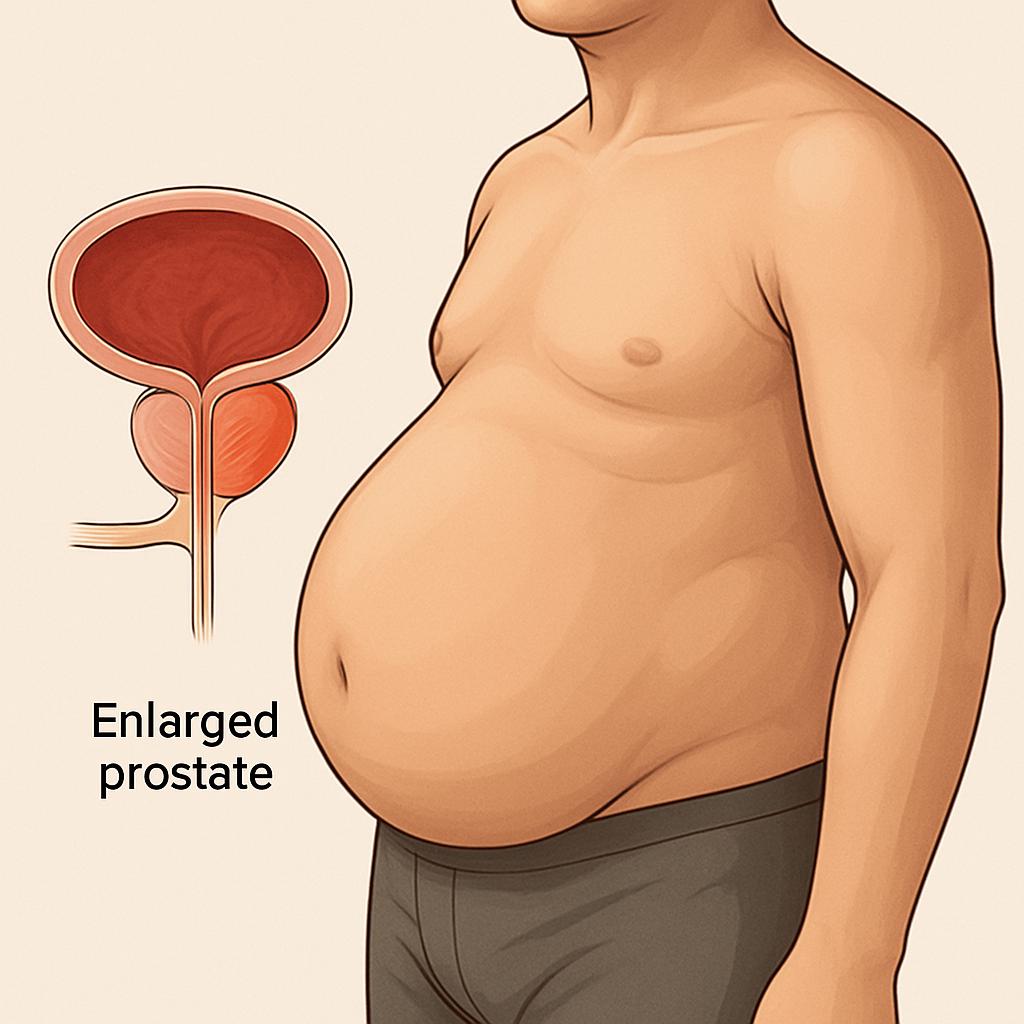Benign prostatic hyperplasia (BPH) — an enlargement of the prostate gland — is one of the most common conditions affecting men as they age. It’s not cancerous, but it can cause a range of uncomfortable urinary symptoms, from a weak flow to constant nighttime trips to the toilet.
For some men, medications aren't enough, and surgery becomes necessary. But with over 10 surgical options now available, which ones are patients most interested in? Surprisingly, it’s Google that might have the answer.
A 2024 research paper published in Prostate Cancer and Prostatic Diseases analysed over a decade of online search data using Google Trends, offering unique insights into which BPH procedures are gaining traction and why.
What is benign prostatic hyperplasia (BPH), and why does it matter?
BPH is a non-cancerous enlargement of the prostate gland, usually seen in men over the age of 50. As the prostate grows, it can press against the urethra — the tube that carries urine out of the body — leading to lower urinary tract symptoms (LUTS).
Common symptoms include:
- A weak or slow urine stream
- Difficulty starting urination
- Frequent urination, especially at night (nocturia)
- A feeling of incomplete emptying
- Sudden urges to urinate (urgency)
Although medications like alpha blockers and 5-alpha-reductase inhibitors are often used initially, many men eventually consider surgical treatment.
What surgical options are available for BPH?
Traditionally, the go-to surgical option has been TURP (transurethral resection of the prostate). But today, several newer, less invasive treatments are available.
The main procedures analysed in the Google Trends study were:
- TURP – Still the “gold standard” but more invasive.
- UroLift – A minimally invasive implant that lifts and holds the prostate tissue away from the urethra.
- Rezum – Uses steam therapy to shrink prostate tissue.
- Aquablation – Uses robot-guided waterjet ablation to remove prostate tissue precisely.
- GreenLight Laser Therapy – Vapourises prostate tissue using laser energy.
Each has its pros and cons in terms of effectiveness, recovery time, and side effects, especially regarding sexual function.
What does Google Trends reveal about public interest?
The research team analysed search activity from 2010 to 2022, focusing on the United States. They tracked how often each treatment was searched over time, assigning a Relative Search Interest (RSI) score from 0 to 100 (100 = peak popularity).
Here are the standout results:
- TURP had the highest average RSI (71.48), but its dominance has declined.
- UroLift showed the steepest rise, peaking at 94 in August 2021.
- Rezum also gained traction after 2016, with a peak RSI of 23.
- Aquablation had a slow but steady increase, peaking at 13 in August 2022.
- GreenLight remained flat with little growth in interest.
So, while TURP is still the most searched-for treatment, there’s growing curiosity about less invasive procedures.
Why is public interest shifting toward newer BPH procedures?
The rise in searches for UroLift, Rezum and Aquablation appears closely linked to the publication of clinical trials showing their benefits.
Key reasons for rising interest:
- Quicker recovery times – Many newer treatments are day-case or outpatient.
- Fewer sexual side effects – Preserving erectile and ejaculatory function is a big concern for men.
- Minimal invasiveness – Less cutting or burning, less bleeding.
- Growing awareness – Internet research and patient forums are influencing decision-making.
For instance, UroLift’s popularity soared after the publication of the L.I.F.T. Study in 2013, which showed it could relieve symptoms without affecting sexual function. Similarly, Rezum’s rise began after trial results in 2016 confirmed its efficacy.
How much have these trends changed surgical practice?
Interestingly, the increase in online interest seems to mirror what's happening in actual surgical practice.
A review of American Board of Urology case logs between 2015 and 2020 showed that UroLift procedures jumped from just 1.6% to 32.5% of all BPH surgeries — a significant shift in just 5 years.
That suggests public interest may be a strong predictor of how procedures are being adopted by urologists.
Which BPH surgery is best for you?
There’s no one-size-fits-all answer. Each procedure has advantages depending on your prostate size, your symptoms, your age, and your priorities (e.g. preserving ejaculation vs long-term durability).
Here’s a simplified comparison:
Treatment Invasiveness Hospital Stay Impact on Ejaculation Long-Term Data
TURP Moderate 1 day High risk 20+ years
UroLift Low Day-case Usually preserved 5–7 years
Rezum Low Day-case Often preserved 4–5 years
Aquablation Moderate Overnight Lower risk 3–4 years
Green Light Laser Moderate 1 day Moderate risk 10+ years
What are patients really looking for in BPH treatment?
Studies show that patients value:
- Low complication risk (most important)
- Short recovery time
- Avoiding long-term sexual side effects
- Effective symptom control
Interestingly, ejaculatory dysfunction — once thought to be a major concern — was rated lowest in importance in some surveys. This suggests that for many men, symptom relief takes precedence over sexual side effects — especially in older age groups.
Why does this matter for men exploring BPH treatment?
With the internet now central to how patients explore health options, Google Trends can be a powerful window into what people are curious about—and even help shape how doctors discuss treatment.
For patients, these trends highlight:
- That you're not alone in exploring options beyond traditional surgery
- That newer treatments might be available with fewer side effects
- That knowledge is power: understanding the range of options allows more confident decisions
Frequently Asked Questions (FAQs)
What is the safest BPH procedure?
Most BPH procedures are safe, but the risk profile differs. UroLift and Rezum are among the least invasive, with lower risks of sexual side effects and shorter recovery.
How do I know if I need surgery for BPH?
If lifestyle changes and medications no longer relieve your symptoms, and your quality of life is affected, surgery may be the next step.
Will BPH surgery affect my sexual function?
It depends on the procedure. TURP and GreenLight often carry a risk of retrograde ejaculation, while UroLift and Rezum usually preserve ejaculation.
Is Aquablation better than TURP?
Aquablation offers similar symptom relief to TURP but with a lower risk of ejaculation problems, especially in prostates under 80 cc. However, it’s newer, and long-term results are still being gathered.
Need to explore your BPH treatment options?
If you’re exploring treatment for BPH and want to understand whether you are a candidate for one of the newer procedures, speak to a urologist who offers a range of surgical options — not just one. This ensures the advice you receive is tailored to your anatomy, your goals, and your lifestyle.


